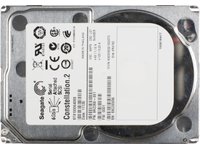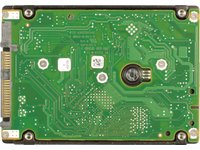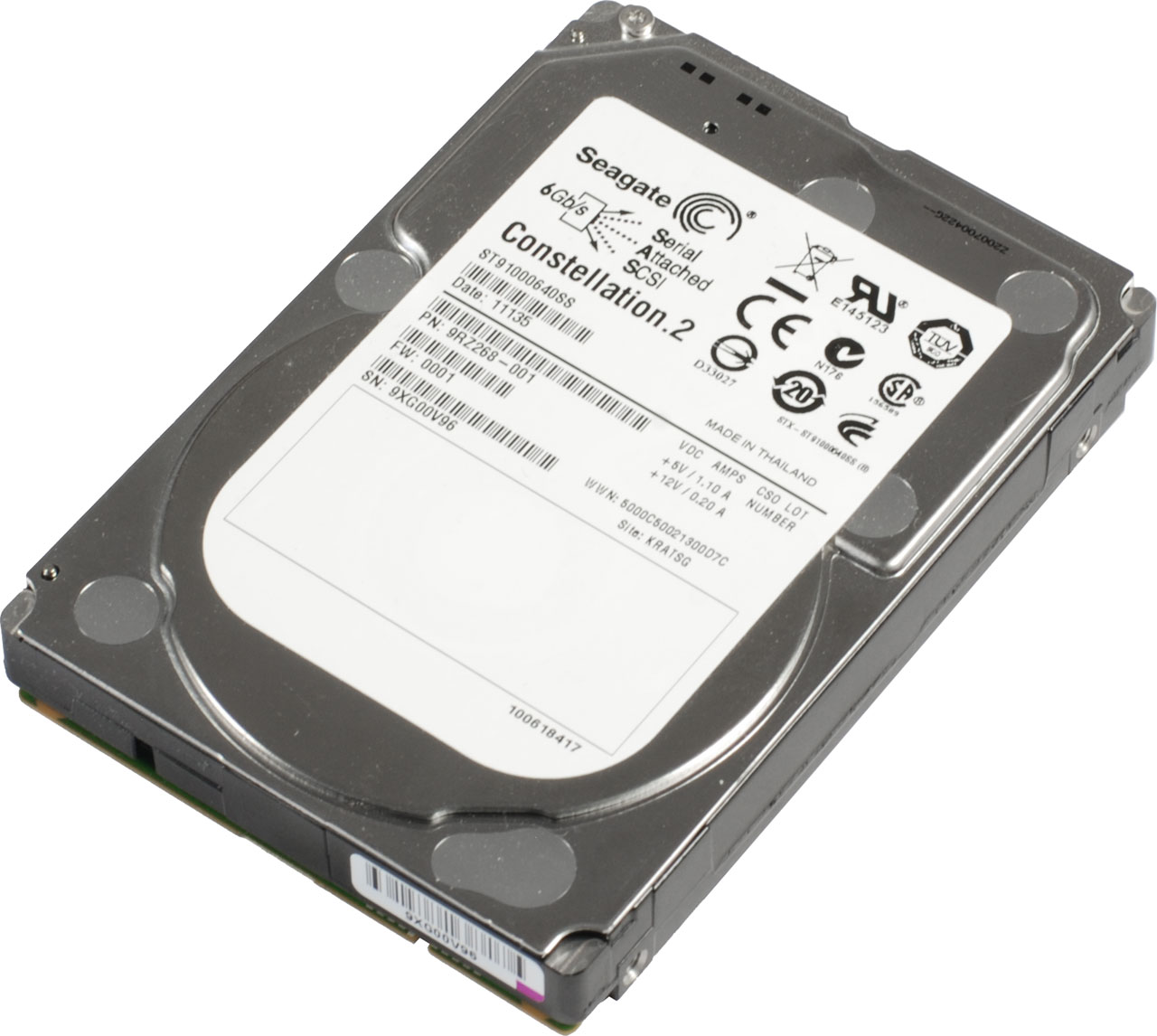Three 2.5" SAS Drives: Enterprise Data Giants, Compared
Currently, 2.5" enterprise drives are leaving their 3.5” competitors behind. They're faster, more flexible, and now they offer comparable capacities (we're up to 1 TB now). In this piece, it's Hitachi versus Seagate battling for high-density supremacy.
Seagate Constellation.2 (1000 GB)
At the moment, there is no 2.5” drive that offers more storage space than Seagate's Constellation.2, the first 2.5” drive designed for corporate use with up to 1000 GB of capacity. Armed with 900 GB, Seagate's Savvio 10K.5 is the only device that even comes close.
There is another superlative to add, because the Constellation.2 has the lowest energy consumption ever seen in this class of devices, at least according to its manufacturer. The claim makes sense because the drive employs a 7200 RPM spindle speed rather than the 10 000 RPM mark typical of most devices in this class. But we'll give away one of the benchmark results in advance: Seagate's drive definitely is one of the most energy-efficient drives. But its predecessor, the first-generation Seagate Constellation, demonstrates even lower power consumption in our test lab.
The Constellation.2 is designed for server environments exploiting DAS, NAS, and SAN, and it is available with two different interfaces. Data is transferred either via a SAS or a SATA connection, each of which has a maximum transfer rate of 6 Gb/s. Along with the top-of-the-line 1000 GB model that we tested (the ST91000640SS, at about $240), Seagate offers 500 GB ($160) and 250 GB models ($120). The smallest model is only available with a SATA interface. Optional hardware-based data encryption is also available. Seagate estimates the Constellation.2's MTBF at 1.4 million hours.
The hard drives in the Constellation.2 family are intended to be incorporated by the Seagate Unified Storage Architecture, and used in conjunction with the Savvio 15K and Savvio 10K drives. Seagate hopes its tiered system will make the many different drive interfaces, form factors, and security features present in corporate IT infrastructures compatible with one another.
As expected, due to a lower spindle speed, the Seagate Constellation.2 drives cannot match the performance of their competitors. Our test sample achieved a transfer rate of about 91 MB/s and a peak data throughput of 118.2 MB/s. On the plus side, the drive heats up considerably less than the Seagate Savvio 10K.5 and the Hitachi Ultrastar C10K600, reaching a maximum temperature of only 53°C.


Get Tom's Hardware's best news and in-depth reviews, straight to your inbox.
Current page: Seagate Constellation.2 (1000 GB)
Prev Page Hitachi Ultrastar C10K600 (600 GB) Next Page Seagate Savvio 10K.5 (900 GB)
